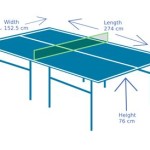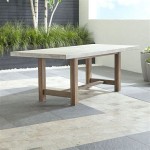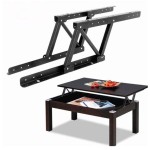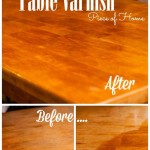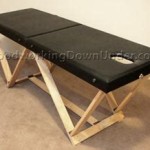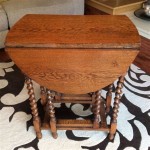The Enduring Appeal of the Antique Oak Library Table
The antique oak library table represents more than just a piece of furniture; it is a tangible link to the past, embodying craftsmanship, history, and enduring design. These tables, typically crafted from solid oak and featuring intricate details, have held a prominent place in libraries, studies, and homes for centuries, transcending trends and maintaining their desirability among collectors and homeowners alike. Understanding the characteristics, history, and value of these tables requires a nuanced approach, acknowledging their unique place in the world of antiques.
Oak, a hardwood known for its strength and durability, was the favoured wood for constructing these tables. The tight grain of oak lends itself well to intricate carving and detail work, resulting in visually appealing and structurally sound pieces. The natural variations in the wood grain, combined with the effects of time and use, contribute to the unique character of each antique oak library table. These tables were frequently designed and constructed during periods when books were more accessible and learning was valued, which fueled the need for well-made desks and library furniture. The golden-brown hue of aged oak, often enhanced by decades of polishing, adds warmth and sophistication to any interior.
Identifying Key Features of Antique Oak Library Tables
Differentiating an authentic antique oak library table from a reproduction requires careful examination and an understanding of key characteristics. Several features contribute to the authenticity and value of these pieces:
Solid Oak Construction: The primary material is almost always solid oak. While veneer may occasionally be present, particularly on larger surfaces, the underlying structure should be constructed entirely from oak. Reproduction tables often utilize cheaper woods, such as pine or poplar, with an oak veneer applied to the surface. A close inspection of the edges, particularly the legs and table top, can reveal the underlying wood if it is not oak.
Construction Techniques: Antique oak library tables were typically constructed using traditional joinery methods. Mortise and tenon joints, dovetail joints, and pegged joints are common features that indicate a high level of craftsmanship. These joint types are stronger and more durable than modern methods such as screwing or gluing, and they are less likely to fail over time. The presence of these traditional joinery techniques is a strong indicator of the table's age and authenticity.
Hardware and Details: Look for original hardware such as drawer pulls, knobs, and locks. These components can often provide clues about the age and origin of the table. The style of the hardware should be consistent with the period the table is believed to have been made. Consider the presence of details such as carved legs, decorative aprons, and tooled leather inserts on the surface of the table. Intricate carvings and details are hallmarks of high-quality antique oak library tables.
Patina and Wear: Authentic antique oak library tables will exhibit a natural patina that develops over time due to exposure to light, air, and use. This patina is a subtle sheen that cannot be easily replicated on newer furniture. The table may also exhibit signs of wear, such as scratches, dents, and minor imperfections. These imperfections should be viewed as evidence of the table's history and should not be mistaken for damage or poor quality. Uniform or excessively perfect surfaces can be a sign that the table is a reproduction or has been heavily refinished.
Style and Period: Familiarity with the common styles of furniture from different periods is essential when assessing an antique oak library table. Tables from the late 19th and early 20th centuries, for example, frequently incorporate elements of the Arts and Crafts movement or the Victorian era. Researching the prevailing styles of furniture during these periods can help to identify the table's age and origin.
Maker's Marks and Labels: The presence of a maker's mark or label can significantly increase the value and desirability of an antique oak library table. These marks often provide information about the manufacturer, the place of origin, and the date of production. However, the absence of a mark does not necessarily indicate that the table is not authentic. Many smaller workshops and individual craftsmen did not consistently mark their work.
By carefully examining these features, it is possible to gain a better understanding of an antique oak library table's authenticity, age, and value.
Historical Context and Regional Variations
The history of the antique oak library table is inextricably linked to the development of education and literacy. As books became more readily available and reading became a more widespread pastime, the demand for dedicated spaces and furniture for studying and reading increased. The oak library table provided a functional and aesthetically pleasing surface for these activities, becoming a central element in libraries, schools, and private homes.
In England, during the Victorian era, oak library tables were often substantial and ornate, reflecting the opulence and grandeur of the time. Tables from this period frequently feature elaborate carvings, turned legs, and decorative aprons. These tables were often commissioned by wealthy individuals and institutions who sought to create impressive spaces for intellectual pursuits. Arts and Crafts furniture designers in England, such as those associated with the Guild of Handicraft, also produced oak pieces that emphasized simple elegance and the honest display of materials. The emphasis was on functionality and quality craftsmanship.
In the United States, oak library tables were popular during the late 19th and early 20th centuries, particularly in the Midwest. The availability of oak forests in this region made oak a readily accessible and affordable material. American oak library tables often exhibit a more utilitarian design compared to their English counterparts, with simpler lines and less elaborate decoration. Mission style furniture, a distinctly American movement, offered a variant on the library table, embracing a rectilinear aesthetic and robust construction.
Regional variations in style and construction techniques are also evident. For example, oak library tables from the Pennsylvania Dutch region often feature distinctive painted decorations, reflecting the folk art traditions of this community. Tables from New England may incorporate elements of colonial design, such as turned legs and simple aprons. Careful study of these regional variations can provide valuable insights into the provenance and history of an antique oak library table.
Furthermore, the availability of specific types of oak influenced design. Quarter-sawn oak, prized for its distinctive ray flecks, was commonly used in higher-end tables. The sawing process made it more stable and visually striking, making it a sought-after material.
Preservation, Restoration, and Value Considerations
Maintaining the value and integrity of an antique oak library table requires careful attention to its preservation and, when necessary, appropriate restoration techniques. Improper cleaning or restoration can damage the table and diminish its value.
Cleaning and Preservation: Regular dusting with a soft cloth is essential for removing dirt and debris. Avoid using harsh chemicals or abrasive cleaners, as these can damage the finish. A mild soap and water solution can be used for more thorough cleaning, but it is important to dry the table thoroughly afterwards. Period-appropriate waxes can be used to maintain the finish and protect the wood from moisture. Avoid placing the table in direct sunlight or near sources of heat, as this can cause the wood to dry out and crack.
Restoration Considerations: Restoration should be undertaken only when necessary and should be performed by a qualified professional. Avoid stripping the original finish unless it is severely damaged, as this can significantly diminish the table's value. Repairing damaged veneer, replacing missing hardware, and reinforcing weak joints are common restoration tasks. When replacing hardware, strive to use pieces that are as close as possible to the original in terms of style and material.
Assessing Value: The value of an antique oak library table is influenced by several factors, including its age, condition, provenance, rarity, and aesthetic appeal. Tables in excellent condition, with original hardware and a well-preserved finish, command higher prices. Tables with a documented history or association with a notable individual or institution are also more valuable. Rarity also plays a role; unique or unusual designs are often more sought after by collectors. Market trends and the overall demand for antique furniture can also affect prices. Consulting with an experienced appraiser can provide an accurate assessment of the table's value.
It is important to document all restoration work performed on the table, as this information can be valuable to future owners and collectors. Maintaining accurate records of the table's history and provenance can also enhance its value.
Ultimately, the antique oak library table is a testament to the enduring appeal of quality craftsmanship and timeless design. By understanding its history, characteristics, and preservation needs, owners and collectors can ensure that these pieces continue to be appreciated for generations to come.

Exquisite Antique Solid Oak Library Table 2 Drawers 30d50w31h Is Not Free

Antique Oak Library Table Original Finish Ing Out

Limbert Mission Oak Arts Crafts Desk Or Library Table With Built In

Antique Oak Library Table With Two Shelves Restoration Project

1920s Antique Oak Library Table Chairish

Vintage Library Table Cityfoundry

Quarter Sawn Oak Double Pedestal Oval Library Table

Antique Heavy Built Oak Library Table Desk

Antique Oak Library Table

19th Century Antique Tiger Wood Empire Library Console Desk Table

